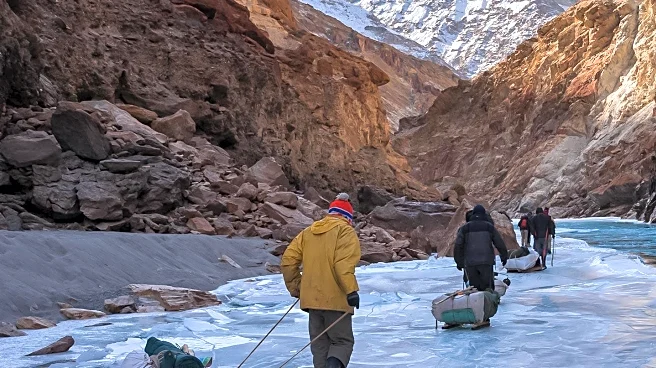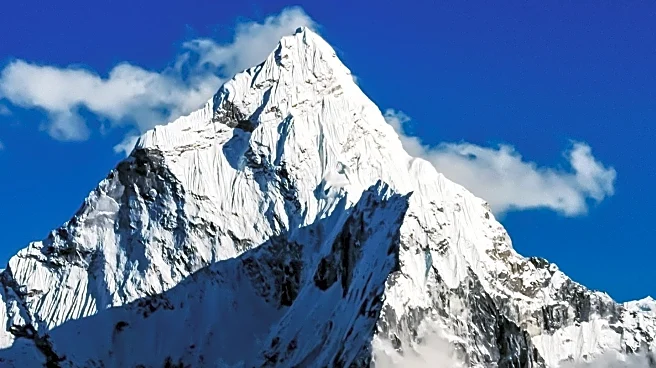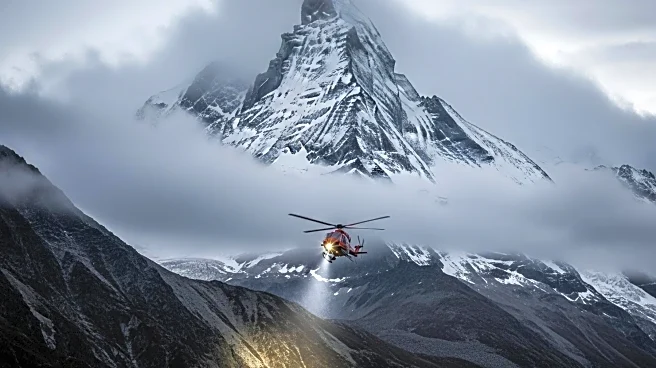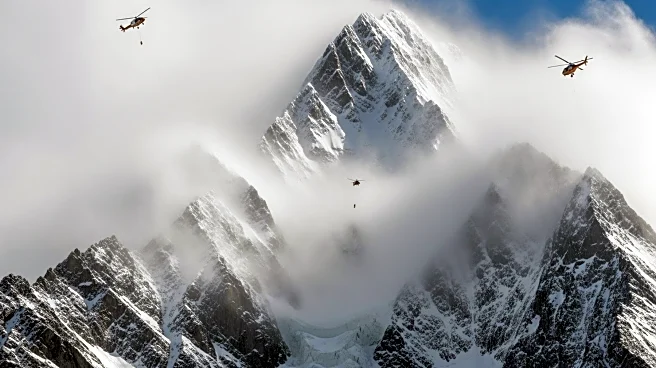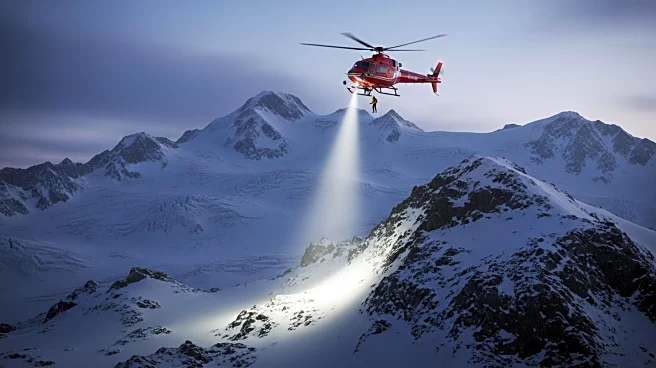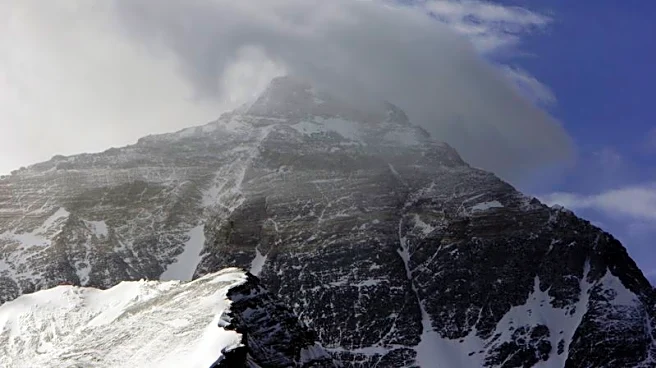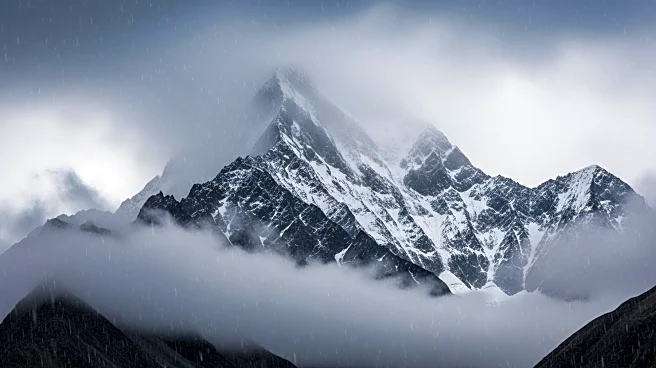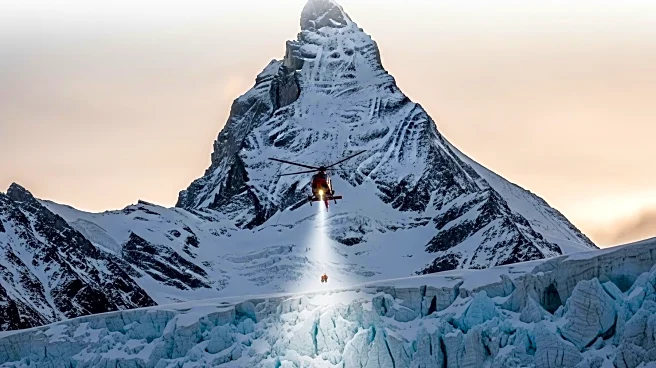What's Happening?
Rescue operations are currently in progress on Mount Everest following a severe snowstorm that has trapped nearly 1,000 individuals in campsites on the mountain's eastern side. According to Chinese state media, hundreds of trekkers were stranded by the blizzard near the eastern face of the mountain in Tibet. As of Sunday, 350 people had been successfully guided to safety in the small township of Qudang, while contact has been established with over 200 additional trekkers. The snowstorm, which began on Friday evening, brought unusually heavy precipitation, including rain, to the Himalayas, posing significant risks of hypothermia to those trapped. Local government-organized rescue teams, along with hundreds of villagers, have been deployed to clear snow and facilitate the evacuation of the remaining trekkers.
Why It's Important?
The situation on Mount Everest highlights the unpredictable and dangerous weather conditions that can occur in high-altitude regions, posing significant risks to trekkers and climbers. The incident underscores the importance of preparedness and the need for effective rescue operations in such remote and challenging environments. The economic impact is also notable, as the region is a popular tourist destination, particularly during peak seasons like October. The suspension of ticket sales and entry to the Everest scenic area could affect local tourism revenue. Additionally, the event draws attention to the broader implications of climate change, which may be contributing to more frequent and severe weather events in mountainous regions.
What's Next?
Rescue efforts are expected to continue as authorities work to ensure the safety of all individuals trapped by the snowstorm. The remaining trekkers are anticipated to reach safety in stages, guided by rescuers. The local government and rescue teams will likely continue to monitor weather conditions closely to prevent further incidents. In the aftermath, there may be discussions on improving safety protocols and infrastructure to better handle such emergencies in the future. The incident may also prompt a review of tourism policies and emergency response strategies in high-risk areas.
Beyond the Headlines
This event may lead to increased scrutiny of the impact of climate change on weather patterns in the Himalayas, potentially influencing future environmental policies and research. The reliance on local villagers and rescue teams highlights the importance of community involvement in emergency response efforts. Additionally, the incident may raise awareness about the need for sustainable tourism practices that prioritize safety and environmental conservation.

